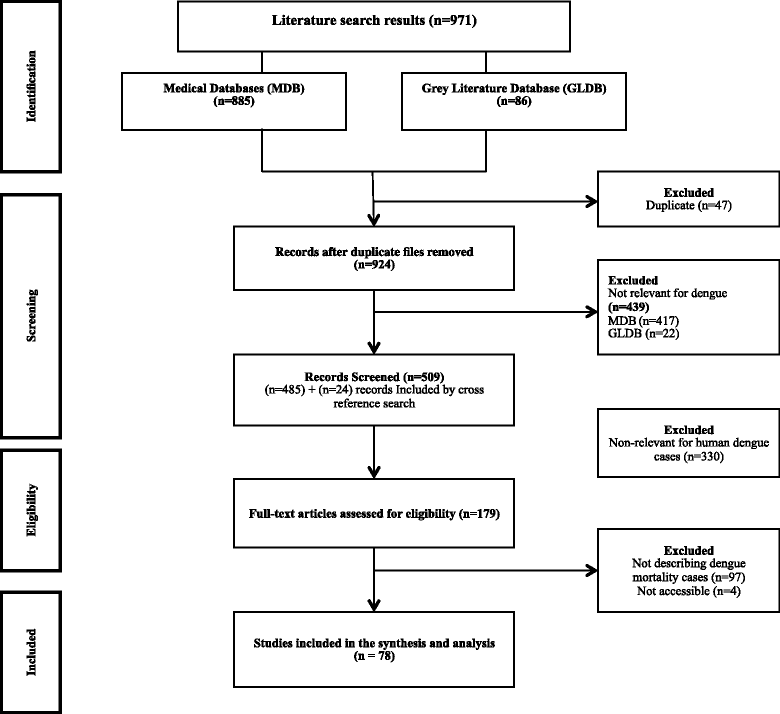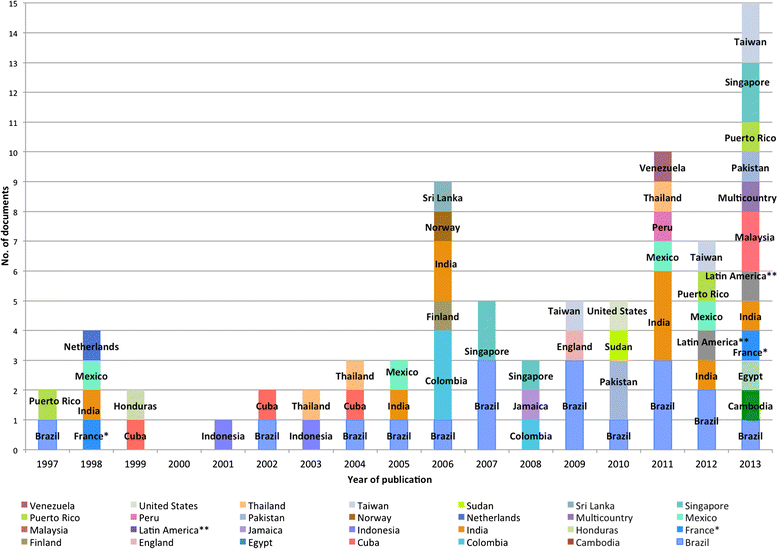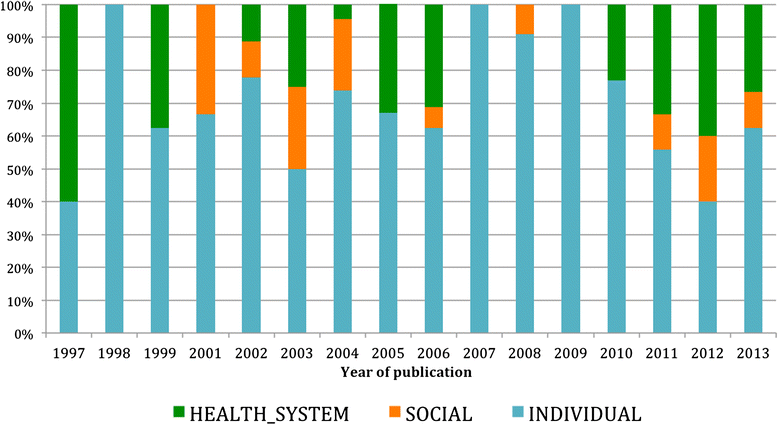Why are people with dengue dying? A scoping review of determinants for dengue mortality
- PMID: 26223700
- PMCID: PMC4520151
- DOI: 10.1186/s12879-015-1058-x
Why are people with dengue dying? A scoping review of determinants for dengue mortality
Abstract
Background: Dengue is a viral disease whose clinical spectrum ranges from unapparent to severe forms and fatal outcomes. Although dengue death is 99% avoidable, every year around 20,000 deaths are estimated to occur in more than 100 countries. We consider that, along with biological factors, social determinants of health (SDHs) are related to dengue deaths as well.
Methods: A scoping review was conducted to explore what has been written about the role of SDHs in dengue mortality. The inclusion criteria were that documents (grey or peer-reviewed) had to include information about dengue fatal cases in humans and be published between 1997 and 2013 and written in English, Spanish, Portuguese or French. The search was conducted using a set of key words related to dengue mortality in several electronic databases: PubMed, LILACS, COCHRANE, Scielo, Science Direct, WHOLIS, OpenGrey, OpenSingle and Google Scholar. Information on SDHs was categorized under individual, social and environmental, and health systems dimensions. A summative content analysis using QDA Miner was conducted to assess the frequency of information on SDHs and its contextual meaning in the reviewed literature. The role of each SDH in dengue mortality was assessed using content analysis results.
Results: From a total of 971 documents retrieved, 78 met the criteria. Those documents were published in the Americas region (50.0%), Asia (38.4%), Europe (9.0%) and Africa (2.6%). The described SDHs related to dengue deaths included, in the individual dimension: age, ethnicity, education, type of infection and immunological status; and in the social dimension: poverty and care-seeking behavior. The health systems dimension included access, opportunity, and quality of care, as well as health staff knowledge. Ethnicity was considered a determinant that depends on cultural and socioeconomic conditions.
Conclusions: Along with biological factors, there are several SDHs related to dengue mortality. However, only a few of these have been systematically analyzed, suggesting the need for more studies on this subject to inform the design and implementation of sustainable interventions to decrease dengue mortality. These findings nevertheless provide a better understanding of the non-biological factors involved in dengue mortality.
Figures



References
-
- WHO . Global strategy for dengue prevention and control 2012–2020. Geneva: WHO. World Health Organization; 2012.
Publication types
MeSH terms
Grants and funding
LinkOut - more resources
Full Text Sources
Other Literature Sources
Medical
Miscellaneous

